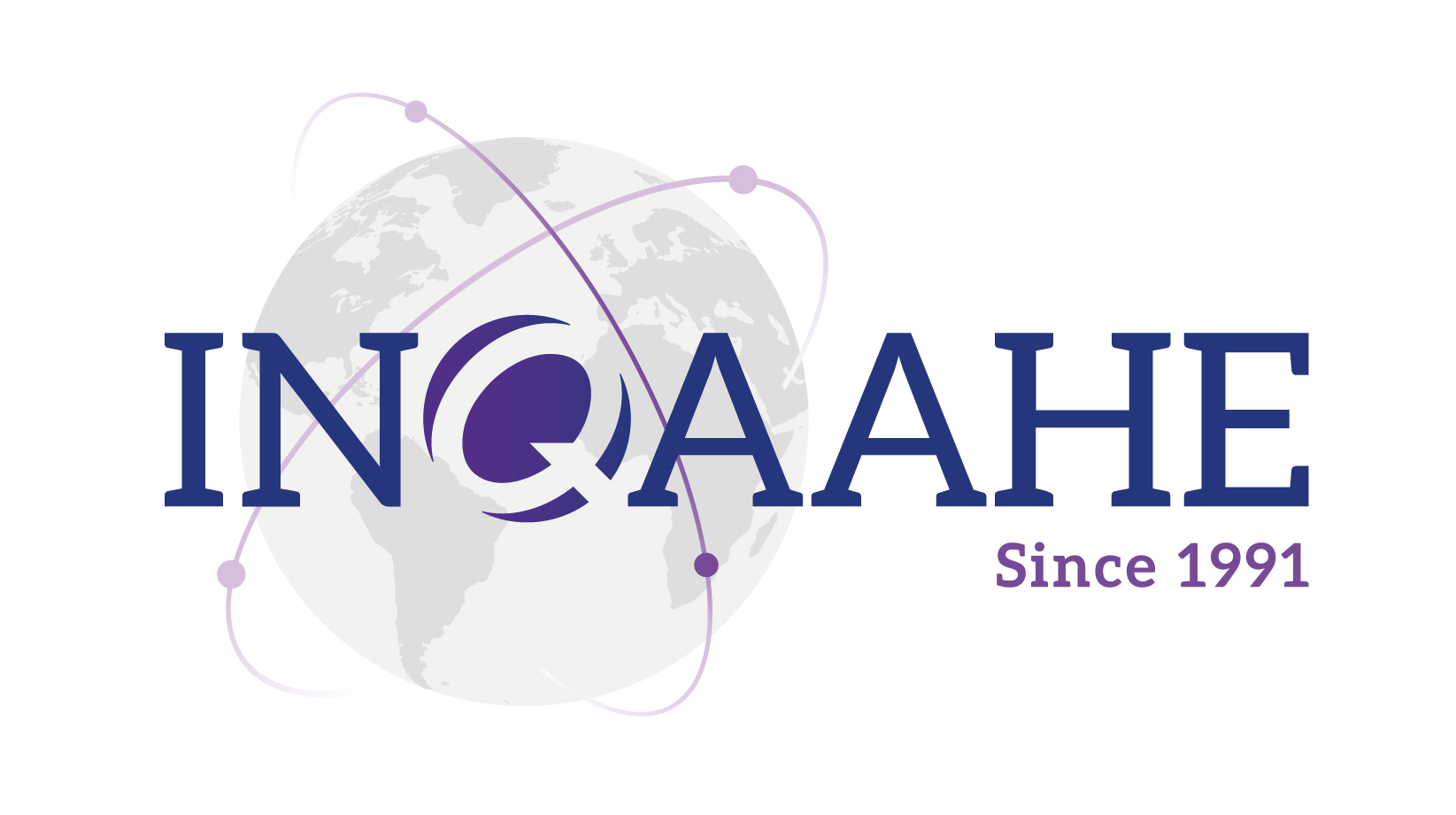The starting point for INQAAHE is diversity. As INQAAHE’s Global Report shows, there are around 345 external quality assurance bodies globally, 60% of them are part of an international network. INQAAHE itself has a total of 183 full members. What does this mean to the question at hand, defining quality?
Well, each and every of these dots is embedded in one system of HE, with different structures, different ideologies. And each system has different challenges, and what is more, these challenges evolve through time. It is not the same a system where in the last 10 years 1,000 private TE providers have popped out than another one where they have the same TE providers, or a third where they have decided their system is going to be delivered exclusively by international HE Providers.
So, does this mean that the question about what is quality is pointless? On the contrary, it is key to be able to answer this question in each and every dot. Each and every of those dots who are EQAB have guidelines and procedures, and in those guidelines and procedures they crystallise their vision of Quality.
Practitioners of QA need to identify in what place they are in this spectrum from control to enhancement; they need to know whose lenses of quality they are applying; which voices are more heard than others (whether is the legal voice, discipline voice, student, business economic perspective, labour market, etc.). What problems are those guidelines addressing, and whether they are addressing them in a manner that is going to be fruitful or whether they are going to generate undesirable outcomes (window dressing, defensive institutions).
So INQAAHE answer to what is Quality Internationally is… There are multiple answers to what is quality, and this answer should be dynamic, it should evolve with the system or the profession, in the case of professional accrediting bodies. But what you have to ensure is that this definition, which has implications on your role, on your guidelines and procedures must be relevant, and for relevant we mean that the quality definition must be suitable to the priorities of their system, of their stakeholders.
The implication is that professionalization of those involved in QA is a key need, and therefore is one of the pillars of INQAAHE’s strategy.
Defining quality is necessary, but it is important to differentiate between the role of internal QA and external QA in order to not create confusion. And to illustrate this point, a simplistic but very straightforward example will be used:
- Say you build planes in your backyard, and maybe you build excellent planes, exceptional planes, whatever exceptional means, and may even have and internal quality assurance system and improve your production year after year. Say that you build them because you can and you want, but that you do not make them fly. Then, nobody really cares if they are external quality assured.
- Say you receive public money for building your planes or you want to make them fly, well this is a different kettle of fish. Should they trust your word for its quality? Or do we need EQA? What conditions must be met by this EQA provider in order to be trustable? And this is where regional and international standards come into place.
- Let’s imagine that you decide your planes should fly to another country. And in this country, they ask for other requirements: maybe they have technical requirements because they have more turbulences, maybe they want the planes painted blue because they want to boost their blue ink industry, maybe they require changes because they want more sustainable planes. 3 different criteria related to quality. In this case, EQA bodies should be able to think critically of their requirements and talk honestly between them. External networks fulfil a vital role in fostering communication, professionalization, trust and collaboration among systems. And in turn, facilitating mobility of professionals and HE graduates between systems.
But EQA is not only useful to signal that quality, EQAB can be important and efficient levers of change for HE, and they have been used by governments to steer change in the HE system. For instance, in Europe it has been one of the most powerful triggers for the implementation of ESGs at national level.
Are there any new international trends that affect all of us? UNESCO’S Roadmap and INQAAHE Roadmap to enable quality in 2030. INQAAHE believes UNESCO’s Roadmap for reinventing HE, presented last May 2022 in Barcelona, has serious implication for the practice of QA.
In 2020 over 235 million students were enrolled in HE in the world, more than doubling the students enrolled in 2000. However, despite the spectacular expansion occurring in many parts of the planet, severe disparities remain. Income inequality, persistence of armed conflict, overall decline of democracy are big challenges of our society. And HE provision is an activity with the potential to foster equity and the equal distribution of opportunities.
We do believe that QA can and must play a role to support progress along this Roadmap towards innovative, flexible and inclusive solutions to support to global agenda. We need to explore how to ensure quality in flexible learning pathways (PLR, micro-credentials), how to ensure that digitalization of T&L does not compromise quality; ensure QA of cross-border education, as well as how to safeguard core values of quality (inclusiveness, integrity, independence, academic freedom, collaboration, internationalisation and diversity).
Ultimately, INQAAHE believes that in order to not only be seen as relevant signalling quality, but to truly be relevant, we need invest the time and staff development in truly understanding the innovation and diversity happening in HE - and curating and promoting relevant research - so we are developing standards and practices that actually help. So, as INQAAHE President Deb Adair says, we have to be students of quality in diverse provisions before we can become the stewards of them.
Dr. Anna Prades (Treasurer and member of INQAAHE's Executive Committee)

